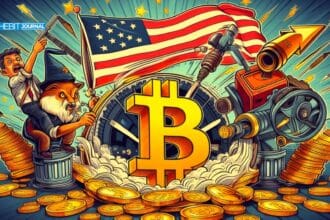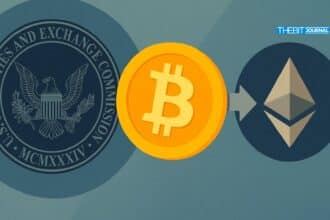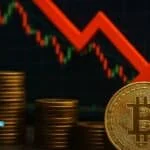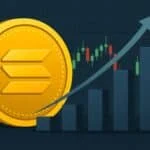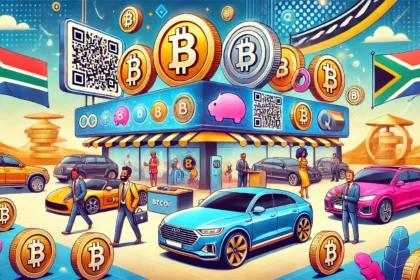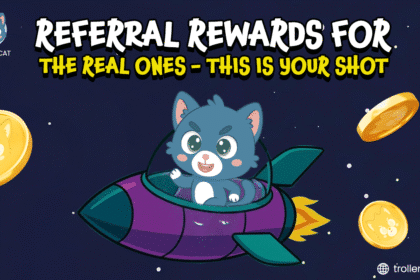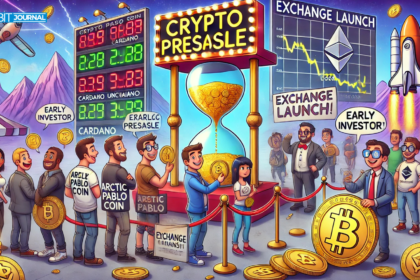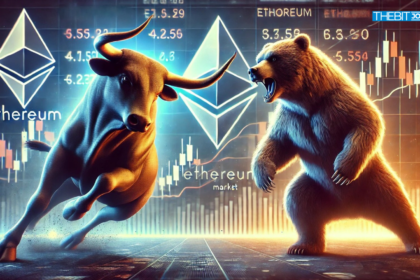According to Ripple and BCG, the tokenized assets market could grow from $600 billion in 2024 to $18.9 trillion by 2033. This isn’t just a prediction. Big banks, tech platforms, and regulators are already pushing tokenization into everyday finance.
From bonds to real estate, real-world assets are moving onto blockchains, giving investors easier, faster, and more transparent access.
How Fast Is the Tokenized Assets Market Growing?
Ripple and Boston Consulting Group estimate the tokenized assets market will grow at 53% per year over the next nine years. By 2030, they expect it to reach $9.4 trillion, and nearly $19 trillion by 2033.
“Tokenization is reshaping the global economy, bringing more assets online, increasing liquidity, and cutting out inefficiencies.”
This market isn’t a future idea. It’s already gaining traction across traditional finance and crypto ecosystems.

What’s Driving the Tokenized Assets Market?
Big Financial Institutions Join In
JPMorgan, BlackRock, and Goldman Sachs already issue tokenized assets. BlackRock CEO Larry Fink said,
“The next generation for markets… is the tokenization of securities.”
These firms use blockchain to issue digital versions of bonds, Credit, and money-market funds. Their actions show real-world belief in tokenization.
Clearer Rules Create Confidence
Governments are catching up. The EU, UAE, and Switzerland already have digital asset laws. The United States is creating stablecoin and custody regulations.
As Bloomberg Law noted,
“Tokenization needs clear rules to fulfill its promise. Regulators now recognize that.”
When rules are clear, institutions feel safe entering the space.
Technology Has Caught Up
Platforms like Chainlink, Polymesh, and Fireblocks now support compliant tokenization. They offer secure wallets, verified ownership, and innovative contract tools that meet global finance standards.
This makes it easier for both startups and banks to enter the tokenized assets market with confidence.
Real Use Cases in Action
Tokenized assets go beyond buzzwords. Here’s how real-world sectors use them:
| Asset Type | Tokenization Benefits |
|---|---|
| Government Bonds | Real-time settlement, no intermediaries |
| Real Estate | Fractional investment, global access |
| Private Credit | Easier syndication and investor onboarding |
| Carbon Credits | On-chain tracking, better accountability |
| Trade Finance | Faster settlement and transparent records |
The World Economic Forum stated,
“Tokenization can unlock $24 trillion in illiquid assets and transform access to global finance.”
What Challenges Remain?
The tokenized assets market still faces a few roadblocks:
- No global standard: Blockchains and platforms often run on different protocols.
- Missing laws: Some countries haven’t updated finance rules for digital assets.
- Skepticism: Some experts question whether tokenization truly changes market dynamics.
But things are improving. SWIFT showed that even traditional systems can move tokenized assets across blockchains successfully.
Why Crypto Users Should Care
Tokenized assets create new ways to invest. Instead of needing significant capital, users can buy small parts of a property or bond. They get:
- 24/7 access to global markets
- Real-time ownership updates
- Lower fees and no middlemen
- Exposure to regulated financial instruments
As Raoul Pal put it,
“Tokenization is not hype. It’s the full financial system moving to blockchain.”

Conclusion
Based on the latest research, the tokenized assets market is growing faster than many expected, with projections reaching $18.9 trillion by 2033. Tokenization is democratizing access and trust to global finance for the everyday investor with speed and accessibility.
Tokenization is a practice that continues to advance, paving the way toward new possibilities for the everyday investor with greater speed, access, and trust for the global financial system.
For more expert reviews and crypto insights, visit our dedicated platform for the latest news and predictions.
Summary
The market for tokenized assets is set to grow from $600 billion in 2024 to $18.9 trillion by 2033. Major banks, better technology, and stronger regulations are fronting that change. Tokenization brings real-world assets, such as bonds and real estate, to accessible means of trading and market entry. As more platforms adopt this method, both investors and institutions will gain from faster, cheaper, and more transparent financial systems built on blockchain.
FAQs
What is the tokenized assets market?
It’s where tangible assets like bonds, real estate, or loans are turned into blockchain-based tokens.
Why is it growing fast?
Big banks, better tech, and new laws are making tokenized assets easier to create and use.
What can be tokenized?
Government bonds, real estate, private Credit, carbon credits, and trade invoices.
Who is leading this trend?
Firms like JPMorgan, BlackRock, Goldman Sachs, and countries with clear laws are leading adoption.
Glossary
Tokenization: Converting a real-world asset into a digital token.
RWA (Real-World Asset): Any physical or traditional financial asset, like property or debt.
Fractional Ownership: Splitting one asset into many small parts so more people can invest.
Stablecoin: A digital currency tied to a real asset, like the U.S. dollar.
Custody: The secure storage of digital assets by a trusted service.
